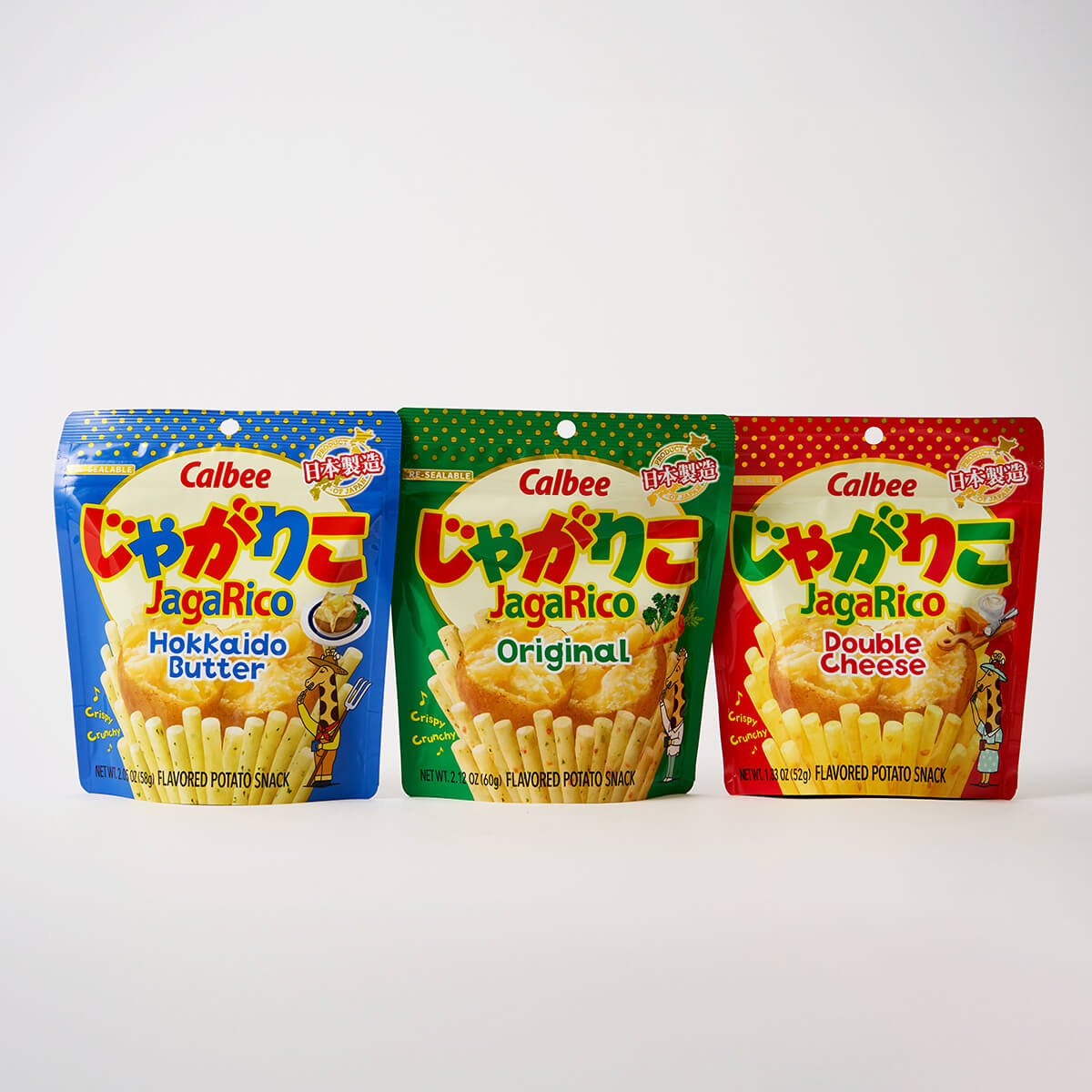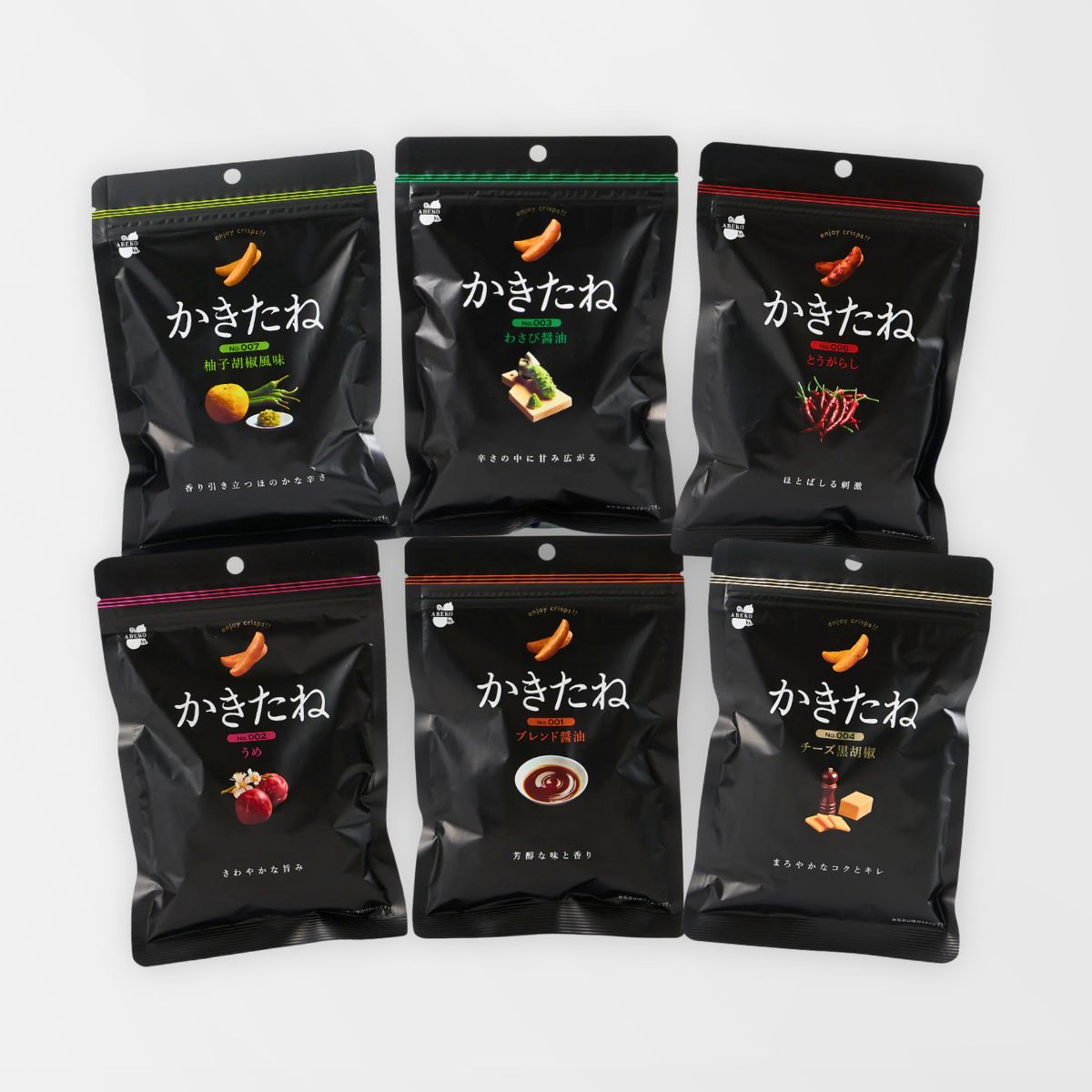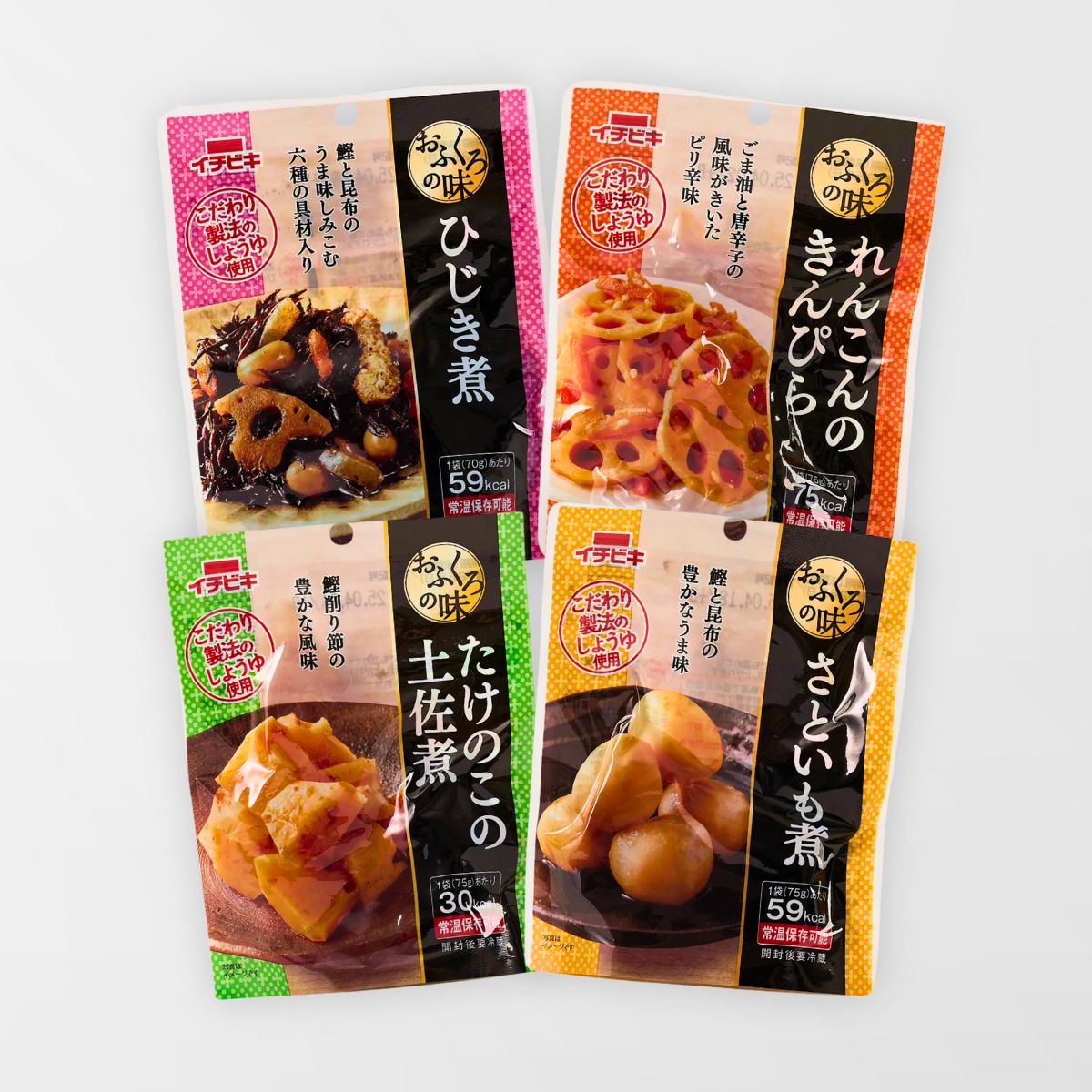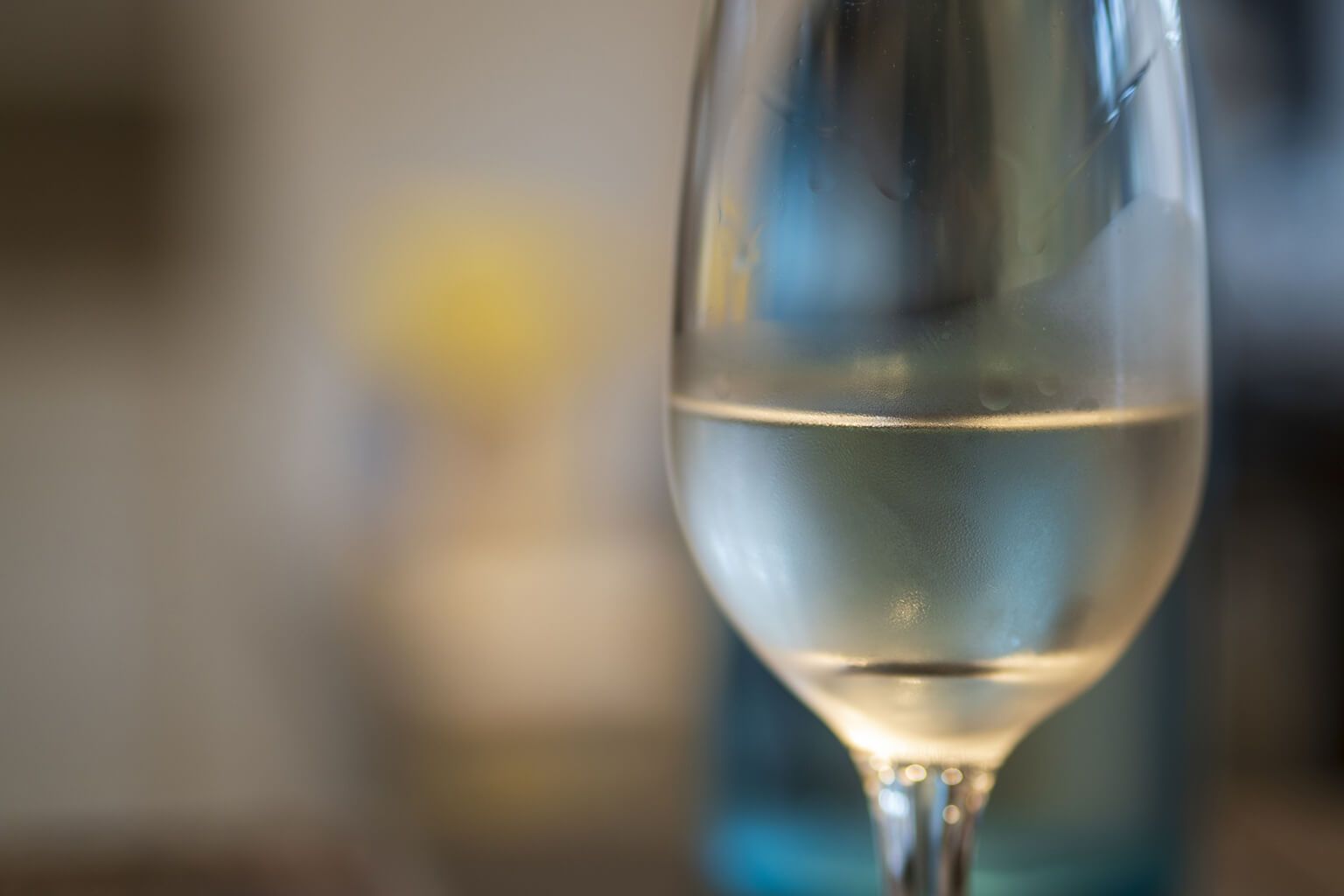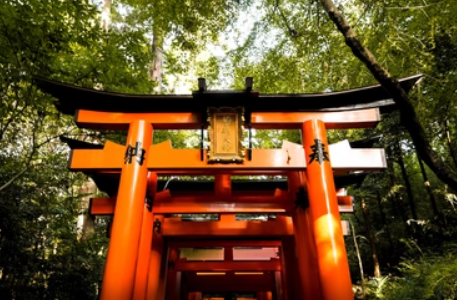It’s time to tackle the elephant in the koji room. Often when talking about sake we get asked, “Is sake good for you? Or is sake bad for you?” And honestly, it’s challenging to answer. Next thing you know, you’re reading medical journals and scientific articles at 3 a.m. with a bottle of “genshu” (undiluted sake) by your side, your cat splayed out over the printouts on your desk, and you find yourself staring at the wall on which you’ve scrawled the old proverb, 酒は百薬の長 (“sake wa hyakuyaku no cho”), “Alcohol surpasses any medicine.” At least you would be if you didn’t have this article. Instead, we’ve done that for you and made it nice and easy to read.
What is sake?

Sake, or “nihonshu,” is a brewed alcoholic beverage made from rice, koji (a beneficial mold), water and yeast. Sometimes there’s a very small percentage of brewer’s alcohol involved, but that’s it. Premium sake contains no additives, no preservatives, no sulfites, no nitrates, no dyes or other funky stuff. (Check out our Sake Guide to dive in a little deeper.)
Is sake the healthiest alcohol? Here's the nutrition info
Before we dive into any health benefits or discussions about alcohol’s effect on the body, let’s take a look at some sake nutrition info from the USDA. On average, 100 grams of sake (that’s a little over 3 fluid ounces to those of us who are metrically challenged) contains 134 calories, 5 grams of carbs and 0 grams of sugar. Most of the calories come from alcohol, a few from the carbs.
Generally speaking, while sake is higher in glucose compared to other alcoholic drinks, it’s lower in fructose. The science of the chemical compounds in sugars can be complex, and all sake are different, so the following chart values are based on data from various resources, such as Japan’s National Research Institute of Brewing, and the Ministry of Education, Culture, Sports, Science and Technology’s Food Composition Database.
Let’s look at other common beverages so we can get a basic idea of the raw data.
| Per 100 grams | Sake | Beer | White Wine | Whiskey |
|---|---|---|---|---|
| Calories | 134 | 43 | 82 | 231 |
| Carbohydrates (Grams) | 5 | 3.6 | 2.6 | 0 |
| Sugar (Grams) | 0.5-4.2 | 0.03-0.1 | 0.1-3.0 | 0 |
| Sodium (Milligrams) | 2 | 4 | 5 | 0 |
The problem with seeing sake and other common beverages in this raw USDA/NRIB format is that these are all enjoyed in different ways and in different quantities. Typically, beer is enjoyed anywhere between 12 to 16 ounces at a time, whiskey between 1 and 2 ounces, sake lands in the 4 ounce per pour range, and wine in the 5 to 6 ounce range. The caloric swing in brewed beverages is much smaller when portion size is taken into account.
| Adjusted for typical pour size |
Sake 4 oz |
Beer 16 oz |
White Wine 6 oz |
Whiskey 2 oz |
|---|---|---|---|---|
| Calories | 152 | 194 | 139 | 131 |
| Carbohydrates (Grams) | 5.7 | 16 | 4.4 | 0 |
| Sugar (Grams) | 0.56-4.76 | 0.14-0.45 | 0.17-5.1 | 0 |
| Sodium (Milligrams) | 2.3 | 18 | 8.5 | 0 |
Is sake healthier than wine?

If we compare the two based on the above charts and take into consideration some additional components that the two beverages have on a chemical level, it’s a bit of a toss up. Wine has fewer calories, but more of certain sugars and more sodium than sake. Ultimately, they both have pros and cons, and trying to determine which is better for you leads to a rabbit hole full of arguments and articles that claim to have irrefutable evidence that their team is better.
What sets sake apart from other liquors?
Sake has a secret weapon that other alcoholic beverages don’t. These nifty little chemical compounds give sake a lot of the umami notes that delight the tongue and help our bodies in beneficial ways. These powerhouses are a result of the brewing process, coming out as the koji and yeast change the chemical breakdown of the protein in the rice used. The brewing process allows for a longer, slower chemical process that helps the koji and yeast digest and alter the proteins to produce nitrogen compounds, of which we’re talking about two here: amino acids and peptides.
Amino Acids
Amino acids serve as the building blocks for protein. There are 20 different amino acids, each with a difficult name to pronounce and each serving a different purpose in the formation of protein. A commonly known amino acid is glutamic acid, but the list includes aspartic, glycine, and on and on.
Other alcohols also have some amino acids in them, being the building blocks of protein and all, but the key thing about sake is that it contains significantly more than the rest. Compared to white wine, sake contains approximately 10 times the amount of glutamic acid, a major component in umami flavors. In fact, in almost every category, sake outperforms other beverages when it comes to quantity of amino acids, usually by large margins.
Peptides
Peptides are little strings of amino acids, which are smaller than proteins and therefore easier for your body to break down. This is where our super-powered mold, koji or Aspergillus oryzae, comes into play. During the fermentation process, koji does a lot of work, and one of the products of all that work are tons of peptides; specifically, things like pyroglutamyl and ACE-inhibitory peptides. Those of you with specific understanding of chemical compounds are probably oohing and ahhing at that, but what does that mean for those of us without biochemical expertise? What are these peptides' health benefits?
First off, peptides are easier for the body to absorb than proteins, which means they get to work faster. Secondly, there are a lot of dense studies that enumerate the benefits that peptides bring to the party. In sake specifically, those ACE-inhibitory peptides have been shown to help reduce hypertension. The pyroglutamyl peptides have been shown to reduce the symptoms of colitis, and sake has 19 different kinds.
7 key health benefits for sake
There are tons of folk tales surrounding the benefits of sake, from it being good for digestion to it making you wildly attractive, but we want to get to the truth of it. We found seven health benefits that we think are the key attractions for sake.
A better diet option
As we mentioned before, sake is full of those wonderful little chemical compounds that our bodies use to great effect. Some of these compounds actually alter the way our stomachs digest food, causing it to prioritize proteins and slow the digestion of excess starches. Is sake good for weight loss? Not on its own, but moderate consumption on a regular basis can help your digestive tract do what it does best.
“But Tippsy, didn’t you mention there are slightly more calories in a standard pour of sake? Is sake fattening because of the calories?” Well spotted, observant reader, but we don’t consume sake the same way we might drink beer or wine. The higher ABV means that you are less likely to drink as much; a glass of sake is less calorie dense and less sugary than two or three beers or glasses of wine. Another consideration is the type of calorie that alcohol is. Alcohol is an “empty” calorie, which means your body works to immediately burn those away as they serve no long-term purpose.
A better choice for stomach and liver
We’ve talked a lot about chemical compounds, calories, acids and more, and right about now you might be wondering if sake is good for your stomach. We’re pleased to say that actually, it is! Specifically, one compound produced in brewing used to help the yeast along its merry way: Lactobacillus. Or, as we more commonly call it, lactic acid.
Lactic acid is one of many probiotics that help us have a more regular stomach biology. This can help to reduce certain types of inflammation, encourage lactose digestion (most adults are at least mildly lactose intolerant, you know), and even slightly boost your immune system. Lower amounts of other types of acid in sake, such as citric acid, means that you’re less likely to have an acid reflux response, or an upset stomach the next day that other alcohols may cause.
There have also been studies, such as the one by Nakajima et al., showing that sake is good for your liver when consumed regularly over time! Sake promotes antioxidizing activity in the liver, which can help to better process the toxins we ingest.
A better choice for skincare

Worried about developing premature wrinkles? Ever wonder if sake is good for your skin? Worry and wonder no more. We’ve got these little things called fibroblasts all throughout our bodies, but especially in our skin. Sake helps encourage these little guys to retain moisture and warmth, keeping your skin healthy and smooth. Further, the various compounds present in sake such as glycerol are often found in beauty supplements.
There’s a claim in Japan that sake is the reason sumo wrestlers have such baby-smooth and lustrous skin. Oftentimes a small amount of sake is added to a warm bath to encourage the skin to retain moisture and help the body stay warm. This is not to say that we want you to use sake as a skincare product, but rather that it’s not unheard of.
A better choice for sleep
The research is ongoing, but it’s been found that sake helps you sleep, and in a way that leads to high quality sleep. There is no one thing that has been fully pinpointed as the reason that sake promotes high quality sleep, but we know that the yeast plays a big role, as does sake’s ability to help lower systolic blood pressure. Higher blood pressure can lead to insomnia, poor sleep and other health issues. Among other healthy habits, sake can help to reduce blood pressure over time, leading to an easier night’s rest.
The yeast can’t be ignored either, though! The Journal of Sleep Research has shown that ingesting sake yeast and sake stimulates the parts of the brain that handle what’s known as “slow-wave” sleep. Slow-wave sleep is referred to more commonly as deep sleep, and is crucial in reducing perceived fatigue and sleepiness in the morning.
Gluten free
One of the most commonly asked questions is, “Is sake gluten free?” Premium sake, as we all know from the guide linked earlier in this article, is made entirely out of ingredients fully free of any and all gluten. This means that those who have gluten allergies, intolerances or concerns over the amount of gluten they are ingesting are free to enjoy premium sake without any dangers of having a reaction! (The only possible exception is “futsushu” (table sake), which is not as strict with its ingredients. However, this is incredibly rare if not unheard of, and all sake at Tippsy, even the futsushu, is gluten free.)
Sulfite free
Sulfites are a preservative used in food and beverages to stabilize and extend shelf life, as well as prevent discoloration or spoilage. In the wine world, sulfites are very challenging to avoid, especially if you’re looking to drink wine from any country other than your own. Does sake have sulfites too, then? Luckily, it doesn’t! Sake is a very stable alcohol due to the longer fermentation, and as such it doesn’t need preservatives or sulfites!
Good thing too, as adverse reactions to sulfites can range from the minor to the very severe. Those with a sulfite sensitivity may experience mild asthma symptoms such as wheezing when ingesting food and beverage with sulfites. These can worsen all the way to anaphylactic shock, which requires immediate medical attention. Lucky for us, with sake, the only wheezing you’re likely to do is the kind that comes with laughter over the joke you just told your friends over a glass of junmai.
Lower chance of a hangover
Hangovers are a reality of any alcoholic beverage. In Japan, the hangover is called 二日酔い (“futsukayoi”), or more literally translated, “second day drunk.” So why, then, is the sake hangover so much easier to tackle than beer or wine? There are a few solid reasons for that.
First off, sake is sulfite free. Even those of us without a sensitivity to sulfites still react to them, and the more there are, the harder they become to process. Secondly, sake is low in histamines. Histamines are the sometimes-misguided chemicals that are designed to protect our bodies from allergens. Wine, which is high in histamines, may cause your body to accidentally produce allergy-like symptoms in response. Third, sake is low in the acids that can cause metabolic acidosis. That’s a science-based way of saying the hangover induced nausea, vomiting and fatigue.
Still, it is very possible to have a sake hangover. Sometimes sake tastes so smooth and delicious that we go through it too quickly and overindulge. Other times you might forget to drink enough water, which we’ll talk about more in a minute. As with all alcohol, keeping a measured pace, drinking water, and setting yourself up for success is key. (We’ve got a few tips for that coming up soon.) And if you are particularly sensitive to alcohol and susceptible to hangovers, you may prefer premium sake over futsushu, as the latter can contain sweeteners and other additives.
Is sake bad for you? What are sake’s side effects?
Now, it would be unrealistic to say that any alcohol is purely beneficial. It is, after all, still alcohol. Like any other alcohol, over-consumption of sake can lead to health problems. Heavy drinkers may face problems with high blood pressure, heart disease, liver disease and other equally unpleasant consequences. However, sake does not have an increased risk of these problems compared to other alcohols. In fact, all of these problems exist with any alcohol. Like any other alcohol, sake should be drunk responsibly. If you’re able to follow the healthy sake drinking advice below, sake can be beneficial for you in the long term. As with all good things, moderation and thoughtfulness is key!
4 tips for healthy sake drinking
Most of these tips are common sense with any alcohol. So long as you understand that you’re drinking sake for enjoyment, and not as a dependency, you’re likely to reap the benefits. So read on and follow these tips and you too could have the baby-smooth skin and good night’s rest of a sumo wrestler.
Drink the appropriate amount

Moderation is king! Traditionally, it’s considered normal to have one to two cups of sake. But if you’re familiar with the various cups associated with sake, that measurement can be hard to determine. Instead, let’s turn to a traditional vessel called a “masu.”
Masu are made from Japanese wood and were historically used to measure out payments of rice in the days when rice was money. Eventually, the container was adopted by sake drinkers as a show of generosity. The size had been standardized to a unit of one “go,” or 180 milliliters. For daily consumption, it is probably advisable to drink no more than two go (360 milliliters).
Avoid drinking with other liquors
A lot of what makes sake healthy is its unique qualities, such as low acidity, low histamines and lack of preservatives. These can get lost when sake is consumed with other beverages. Additionally, it becomes harder to keep track of exactly how much you’ve actually had to drink when you’re swapping between drinks of varying alcohol content. Especially since sake can go down smooth as compared to higher ABV beverages, it can be very easy to ingest too much and cause hangovers. So although the act of mixing alcohol itself may not lead to a hangover, it can certainly make a hangover more likely.
Drink with water
First off, just drink water as a rule. It’s good for you, your body wants it and it helps that skin stay sumo smooth. Secondly, it’s just the way it’s done in Japan, and if you can trust anyone to drink sake right, it’s the people in sake bars in Japan. In fact, the idea of drinking equal amounts of water to your sake is such an ingrained idea that the Japanese language has a word referring specifically to that water! So take it from us and drink your “yawaragimizu”! (Or look at the science and consider that alcohol dehydrates your body, and you need water to maintain that blood chemical balance we talked about earlier.)
Drink with food

There are two reasons you should enjoy some snacks with your sake. For one, all those amino acids and peptides are also big factors in umami, the sense of savory flavors. Having these acids on your tongue while you eat means that you’re getting deeper and richer flavors, which is why sake is the ultimate food-pairing beverage. The other reason is that when you drink alcohol on an empty stomach, it zips on through to your intestines. The faster you have to process that alcohol, the more impaired you’ll be, and the more likely you are to suffer the adverse effects of alcohol more severely. Trust us, sake wants snacks and snacks want sake!
So, is sake healthy? There are pros and cons
As we’ve seen, sake can have some fantastic benefits, such as better skin, better sleep, less risk of allergens and intolerances, and the list goes on. We didn’t even scratch the surface of what the science community is discovering in terms of sake counteracting diseases and chronic conditions. However we have to keep in mind that sake, like all alcohol, can have its downsides if over-consumed. We encourage you to drink any alcohol in moderation, and with your well-being in mind. We hope that this has been helpful and answered any questions you may have had! Let’s lift a glass to your health. Kampai!
Note: This article is based on scientific research available at the time of publication. We are not health professionals. Consult your doctor if you have questions related to your alcohol consumption and your health.
References:
Yoshitaka Gogami, Kaori Okada, Tadao Oikawa. “High-performance liquid chromatography analysis of naturally occurring d-amino acids in sake.” Journal of Chromatography B,
Volume 879, Issue 29, 2011.
https://www.sciencedirect.com/science/article/pii/S1570023211002431
“Alcoholic beverage, rice (sake).” USDA FoodData Central, 2019.
https://fdc.nal.usda.gov/fdc-app.html#/food-details/167723/nutrients
MySake Wiki, Sake Sommelier Association.
https://mysake.org/index.php/Main_Page
Shun Mitsui. “Sake Amino Acid Comparison.” Aichi Center for Industry ∧ Science Technology, 2020.
http://www.sakeschoolofamerica.com/wp-content/uploads/2020/06/rvsd-Sake-Amino-Acid-Comparison-.pdf
“Glossary of Brewing Terms.” Society for Nada Sake Research.
http://www.nada-ken.com/main/en/
Leonard, Jayne. Medically reviewed by White, Cameron, M.D., MPH. “What to know about peptides for health.” Medical News Today, 2019.
https://www.medicalnewstoday.com/articles/326701
Yoshiyuki Saito, Keiko Wanezaki (Nakamura), Akitsugu Kawato ∧ Satoshi Imayasu. “Antihypertensive Effects of Peptide in Sake and Its By-products on Spontaneously
Hypertensive Rats.” Bioscience, Biotechnology, and Biochemistry, 1994.
https://www.tandfonline.com/doi/pdf/10.1271/bbb.58.812
Tamami Kiyono, Kiyoo Hirooka, Yoshihiro Yamamoto, Sunao Kuniishi, Maho Ohtsuka, Shikou Kimura, Eun Young Park, Yasushi Nakamura, and Kenji Sato. “Identification of Pyroglutamyl Peptides in Japanese Rice Wine (Sake): Presence of Hepatoprotective PyroGlu-Leu.” Journal of Agricultural and Food Chemistry, 2013.
https://pubs.acs.org/doi/10.1021/jf404381
“Talking Glossary of Genomic and Genetic Terms.” National Human Genome Research Institute, 2022.
https://www.genome.gov/genetics-glossary/Amino-Acids
“MedlinePlus Medical Encyclopedia.” National Institutes of Health.
https://medlineplus.gov/ency/article/002222.htm
Reviewed by Brennan, Dan, MD. “Are There Health Benefits to Drinking Sake?” Nourish, WebMD, 2020.
https://www.webmd.com/diet/sake-health-benefits
“Healthy Drinking: The Health Benefits of Sake.” Japan Sake and Shochu Makers Association, 2022.
https://japansake.or.jp/sake/en/topic/quick-guides/healthy-drinking-the-health-benefits-of-sake/
Takayuki Bogaki, Keiichi Mitani, Yuki Oura ∧ Kenji Ozeki. “Effects of ethyl-α-d-glucoside on human dermal fibroblasts.” Bioscience, Biotechnology, and Biochemistry, 2017.
https://www.tandfonline.com/doi/pdf/10.1080/09168451.2017.1353400
Takao Yamada, Jun Hiratake, Mototsune Aikawa, Tetsuyoshi Suizu, Yoshiyuki Saito, Akitsugu Kawato, Koji Suginami ∧ Jun’ichi Oda. “Cysteine Protease Inhibitors Produced by the Industrial Koji Mold, Aspergillusoryzae O-1018.” Bioscience, Biotechnology, and Biochemistry, 1998.
https://www.tandfonline.com/doi/pdf/10.1271/bbb.62.907
“The Probiotic Effects of Lactic Acid Bacteria.” BC Dairy, 2010.
https://bcdairy.ca/the-probiotic-effects-of-lactic-acid-bacteria/
Hiromi Nishida. “Sake Brewing and Bacteria Inhabiting Sake Breweries.” Frontiers in Microbiology, 2021.
https://www.frontiersin.org/articles/10.3389/fmicb.2021.602380/full
Tetsuo Nakajima, Guillaume Vares, Bing Wang, and Mitsuru Nenoi. “Chronic Intake of Japanese Sake Mediates Radiation-Induced Metabolic Alterations in Mouse Liver.” PLoS One, 2016. https://www.ncbi.nlm.nih.gov/pmc/articles/PMC4713437/
Noriyuki Monoi, Ayumi Matsuno, Yuki Nagamori, Eriko Kimura, Yoshitaka Nakamura, Kengo Oka, Tomomi Sano, Tatsuyuki Midorikawa, Toshihiro Sugafuji, Michiaki Murakoshi, Akira Uchiyama, Keikichi Sugiyama, Hoyoku Nishino, Yoshihiro Urade. “Japanese sake yeast supplementation improves the quality of sleep: a double-blind randomised controlled clinical trial.” Journal of Sleep Research, 2015. https://onlinelibrary.wiley.com/doi/full/10.1111/jsr.12336#:~
Nayu Ikeda , Emmanuela Gakidou, Toshihiko Hasegawa, Christopher J L Murray. “Understanding the decline of mean systolic blood pressure in Japan: an analysis of pooled data from the National Nutrition Survey, 1986-2002.” Bull World Health Organization, 2008. https://pubmed.ncbi.nlm.nih.gov/19142299/
“How Does Sleep Affect Your Heart Health?” Centers for Disease Control and Prevention, 2021. https://www.cdc.gov/bloodpressure/sleep.htm
“Sulfite Sensitivity.” Cleveland Clinic, 2020. https://my.clevelandclinic.org/health/articles/11323-sulfite-sensitivity
Fowler, Paige. Reviewed by Ambardekar, Nayana, MD. “What Are Histamines?” WebMD, 2022. https://www.webmd.com/allergies/what-are-histamines
“True or False: Mixing Different Types of Alcohol Increases Your Risk of Getting Sick.” Winchester Hospital. https://www.winchesterhospital.org/health-library/article?id=156993
Cirino, Erica. Medically reviewed by Biggers, Alana, M.D., MPH. “What Happens When You Drink on an Empty Stomach?” Healthline, 2019. https://www.healthline.com/health/drinking-on-an-empty-stomach#on-an-empty-stomach
Sachiko, Iizuka & SUZUKI, Keitaro & Masumura, Takehiro & TANAKA, Kunisuke & WAKAI, Yoshinori. “Evaluation of sake taste brewed from rice suitable for sake brewing and edible rice.” Journal of the Brewing Society of Japan, 2015. https://www.jstage.jst.go.jp/article/jbrewsocjapan/110/9/110_653/_article
Japan Sake and Shochu Makers Association. “A Comprehensive Guide to Japanese Sake.” National Research Institute of Brewing, 2011.
https://www.nrib.go.jp/English/sake/pdf/guidesse01.pdf
Food Composition Database. Ministry of Education, Culture, Sports, Science and Technology.
https://fooddb.mext.go.jp/index.pl
“What Does Sake Taste Like?” Japan Sake and Shochu Makers Association.
https://japansake.or.jp/sake/en/basic/what-does-sake-taste-like/






